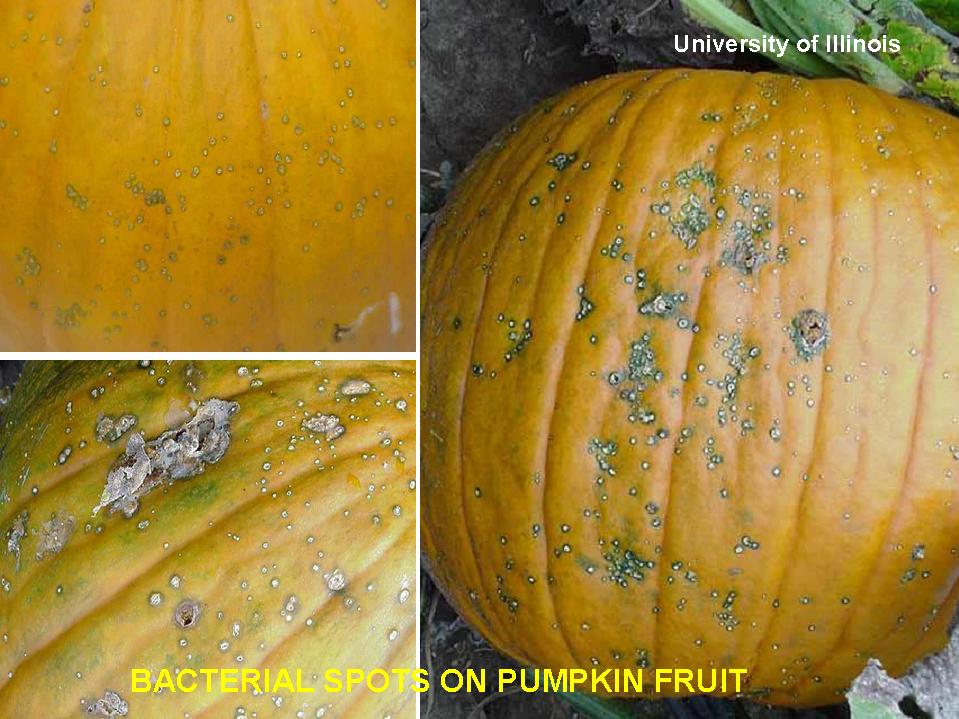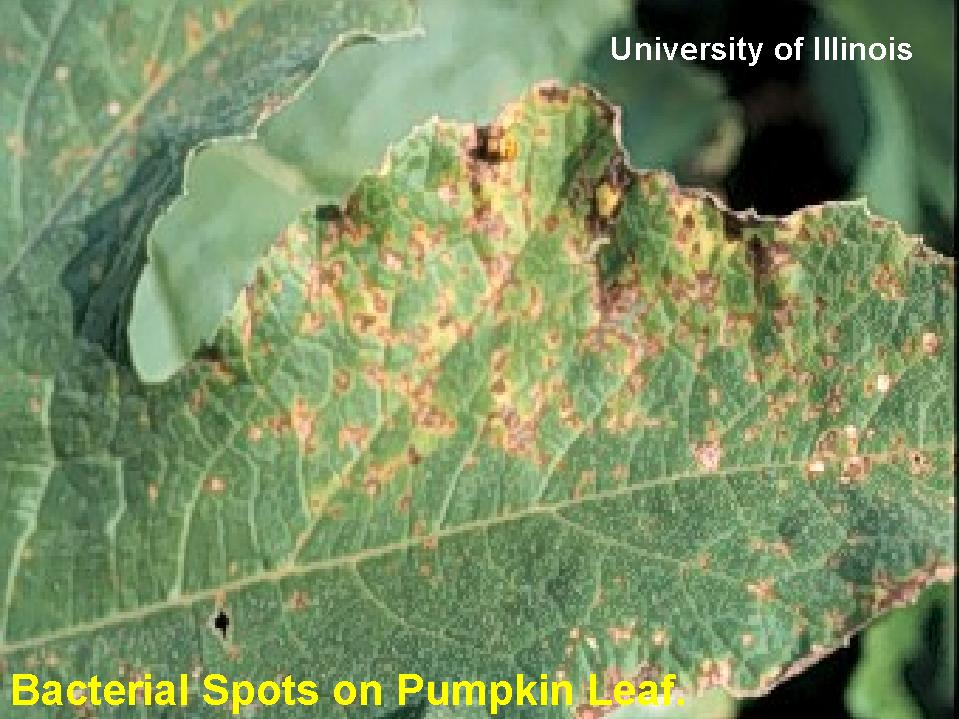


Bacterial Spot of Pumpkin.
Bacterial spot, caused by the bacterium Xanthomonas campestris pv.
cucurbitae, is a serious disease of cucumbers, gourds, pumpkins, and summer
and winter squash. Severe outbreaks of the disease on jack-o-lantern pumpkins
can result in near total losses of crops. In 2000, yield losses caused by this
disease exceeded 50% in some fields in Illinois. In 2001, this disease was observed
in only some pumpkin fields in early September. However, due to high levels
of moisture, considerable yield losses occurred in some fields in late September.
Symptoms. Field diagnosis of the disease is based on the characteristic symptoms developed on leaves and fruit. Symptoms on leaves appear as small, dark, and angular lesions. Center of the lesions gradually become translucent. The lesions may grow and cause serious foliar blight. However, because of their small size, leaf symptoms can easily be overlooked. The most readily identifiable symptoms occur on fruit. The appearance and size of fruit lesions can vary, depending on rind maturity and the presence of moisture. Initial lesions are small, slightly sunken, circular spots, 1/16 to 1/18 inch in diameter, with a beige center and a dark- brown halo. Later the cuticle and epidermis crack, and the lesions enlarge, reaching up to ½ inch in diameter. The large lesions may have scab-like appearance and give rise to tan, raised blisters. On mature fruit, saprophytic fungi often colonize the dead, tan tissue at the center of the lesion. Penetration of the bacteria into the flesh can lead to significant fruit rot in the field or later in storage.
Epidemiology. The bacterium is a seedborne pathogen. Also, the
bacteria can survive in association with infested crop residue. The disease
appears during the summer months when temperatures are high, and most commonly
after heavy rain or overhead irrigation. Fruit infection occurs through natural
opening in young, rapidly expanding fruit prior to the development of thick,
waxy cuticle. The bacteria are splash-spread in the field. Spread of the bacteria
within fields can be very rapid. Long distance dispersal of the pathogen is
by contaminated seed.
Disease Management. The most effective method for control of the
disease is planting pathogen-free seed. Do not save seed from previous crops
because the seed more likely harbors bacteria. Rotation with noncucurbit crops
is effective in management of the disease, unless inoculum is introduced via
contaminated seed. Application of copper compounds during early formation and
expansion of fruit may result in substantial fewer symptomatic pumpkins. M.
Babadoost (phone: 217-333-1523; email: babadoos@uiuc.edu;
website: http://babadoost.cropsci.uiuc.edu).